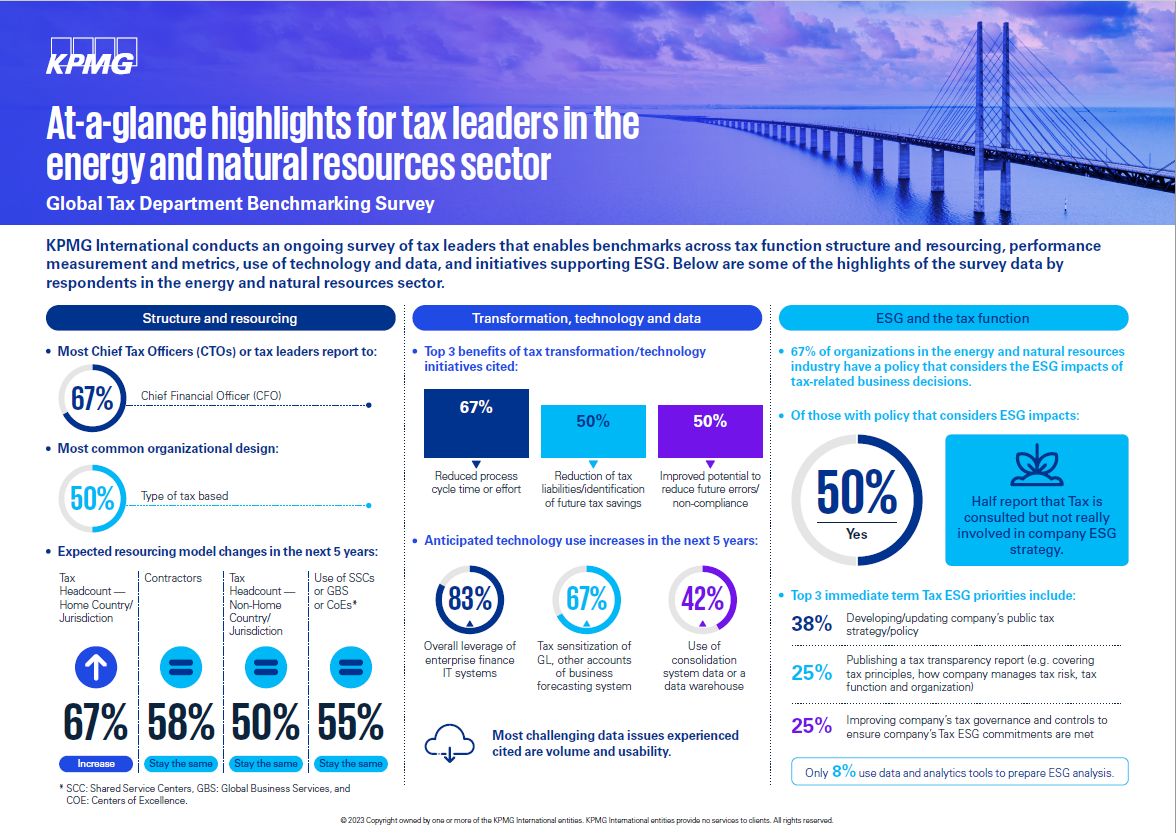How does your tax function stack up?
Seasoned tax leaders in the energy and natural resources sector make key decisions every day to evolve their tax function and keep pace with evolving pressures, disruptive technological advancements, heightened compliance obligations and more — all while seeking to demonstrate value within the organization and beyond.
Benchmarking against comparable energy and natural resources tax functions can be a powerful tool for reflecting on your organization's current position and planning how to prepare for the future. To help, KPMG International conducts an ongoing survey of the tax functions in multinational organizations around the world. The data gained offers insights into tax functions globally and how they are evolving in their structure, governance, priorities and performance measures, through the use of technology and more.
In this at-a-glance summary, we provide a look at some of the key findings relating to tax function structure and resourcing, transformation, technology and data, and ESG from survey respondents in the energy and natural resources sector.

At-a-glance highlights for tax leaders in the energy and natural resources sector
Explore these highlights gathered from the 2023 Global Tax Function Benchmarking Survey.
Download PDF (387 KB) ⤓
Connect with us
Related content
Special focus reports
Additional sector highlights














